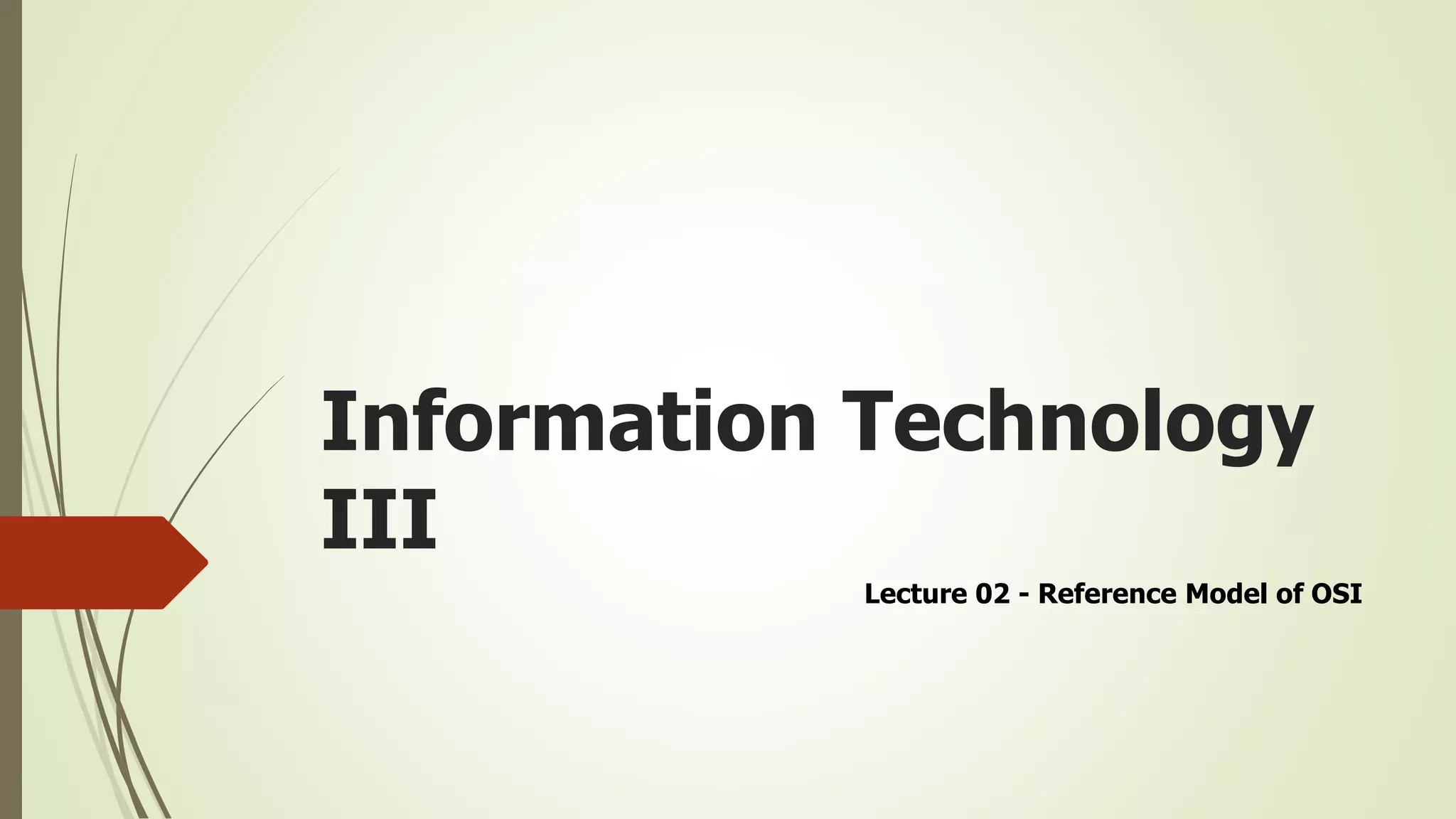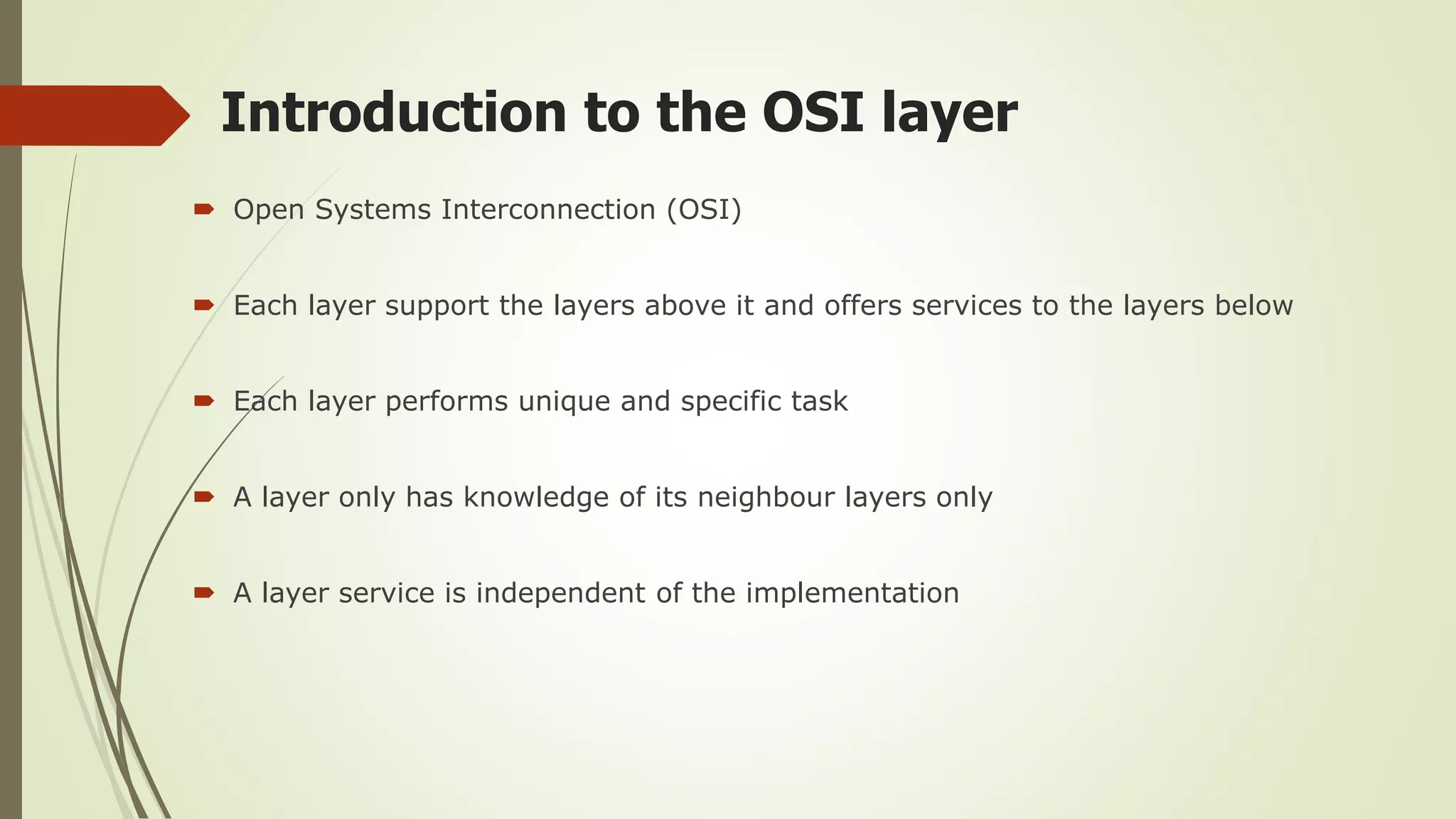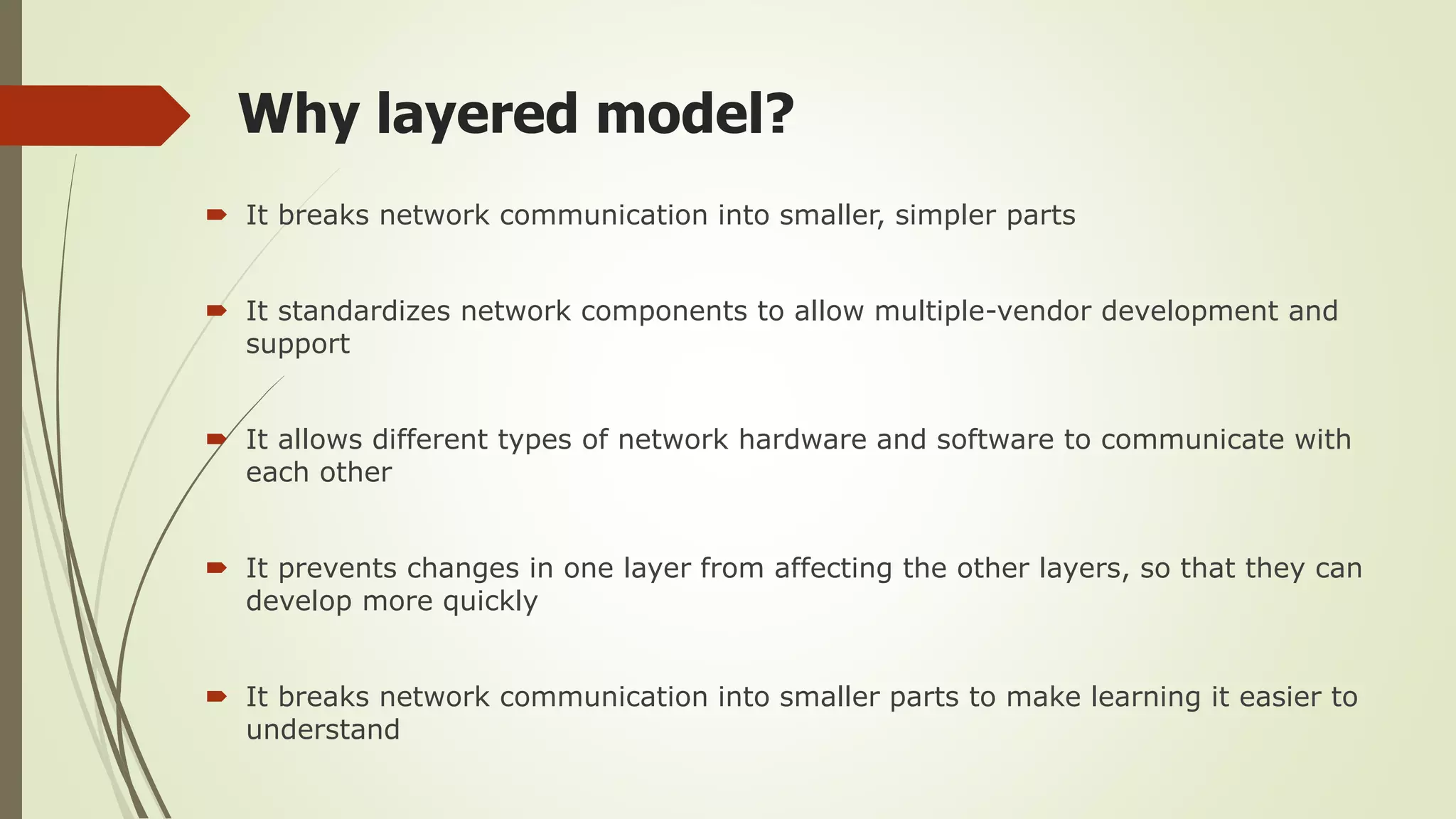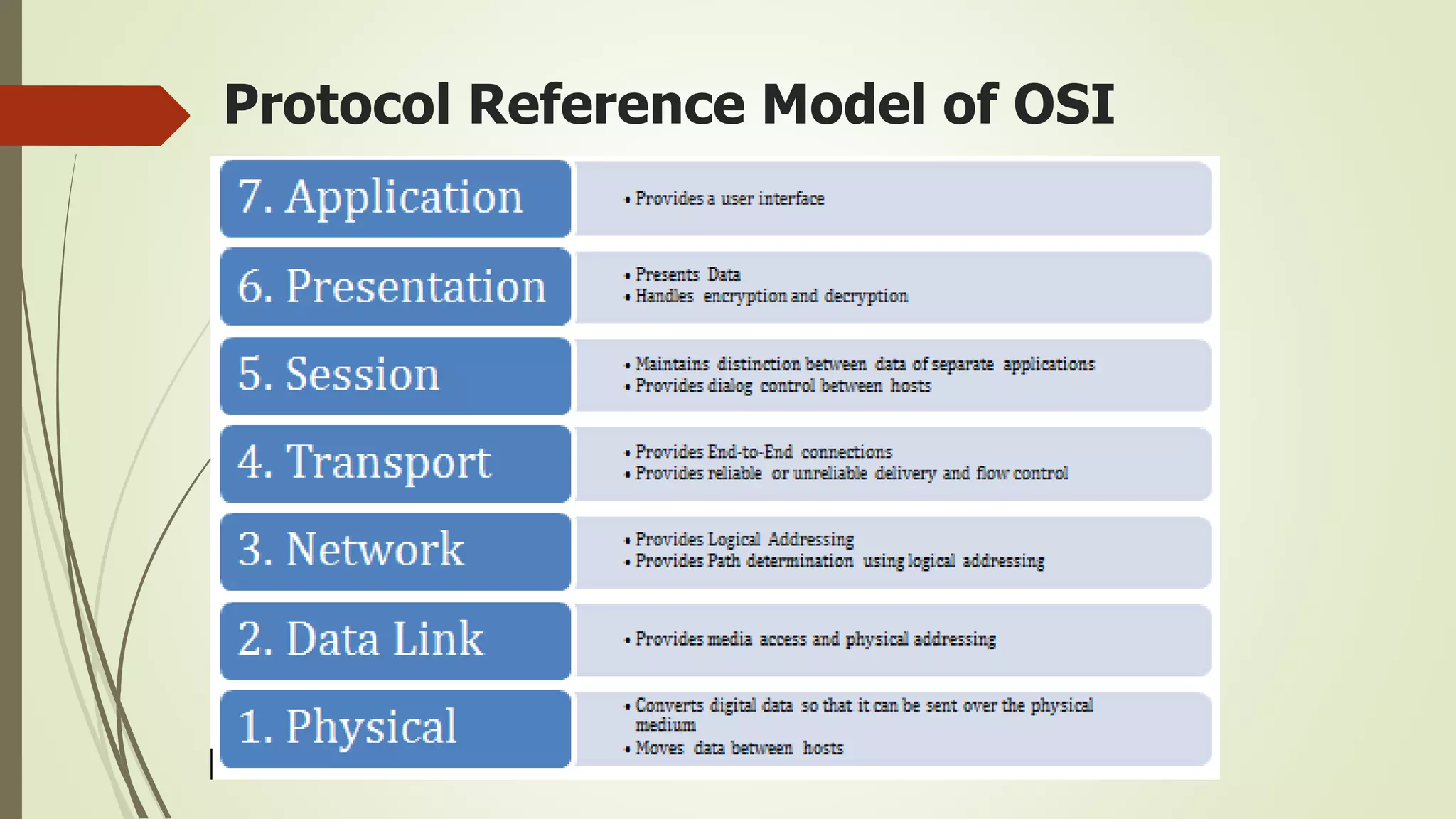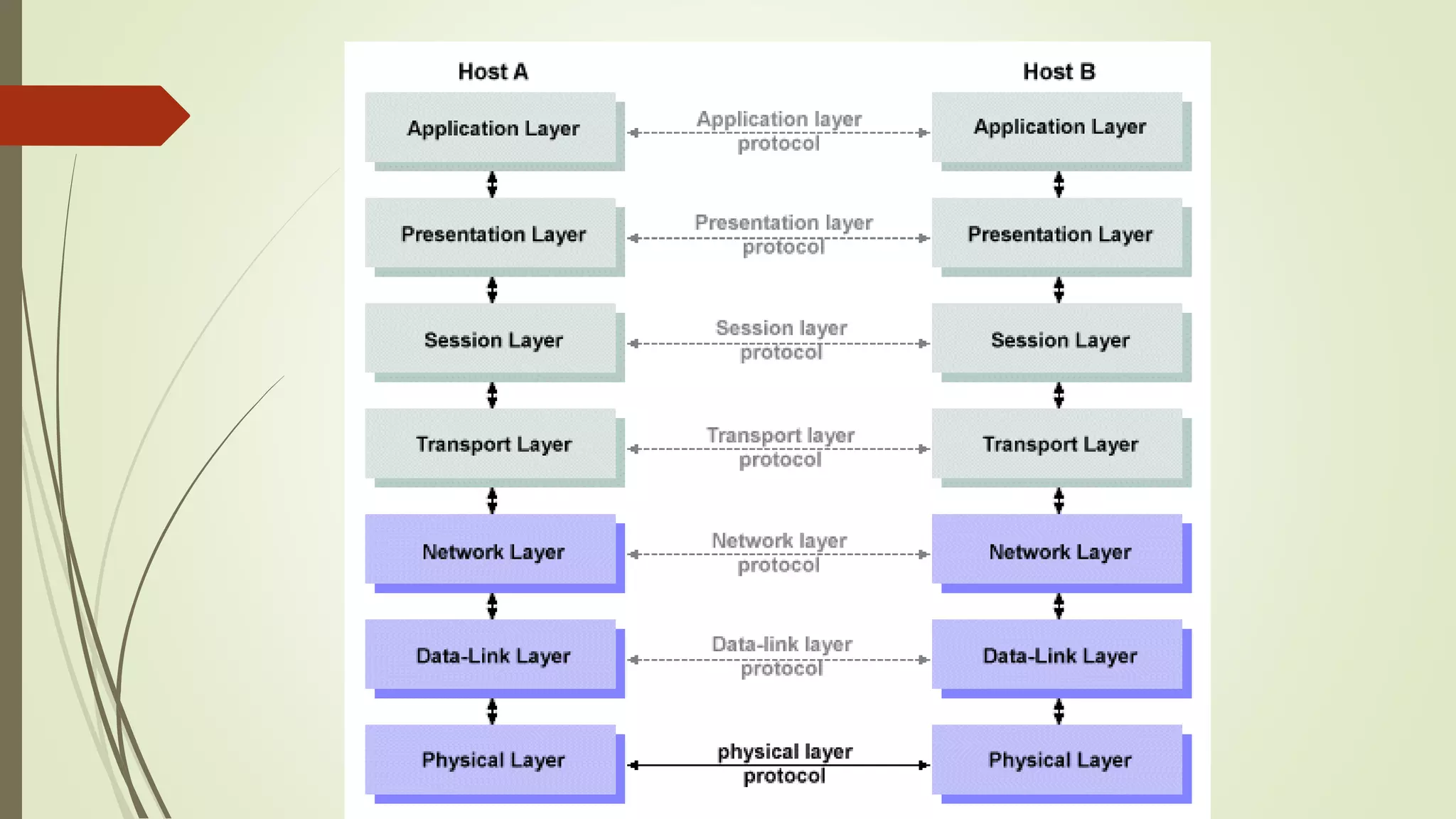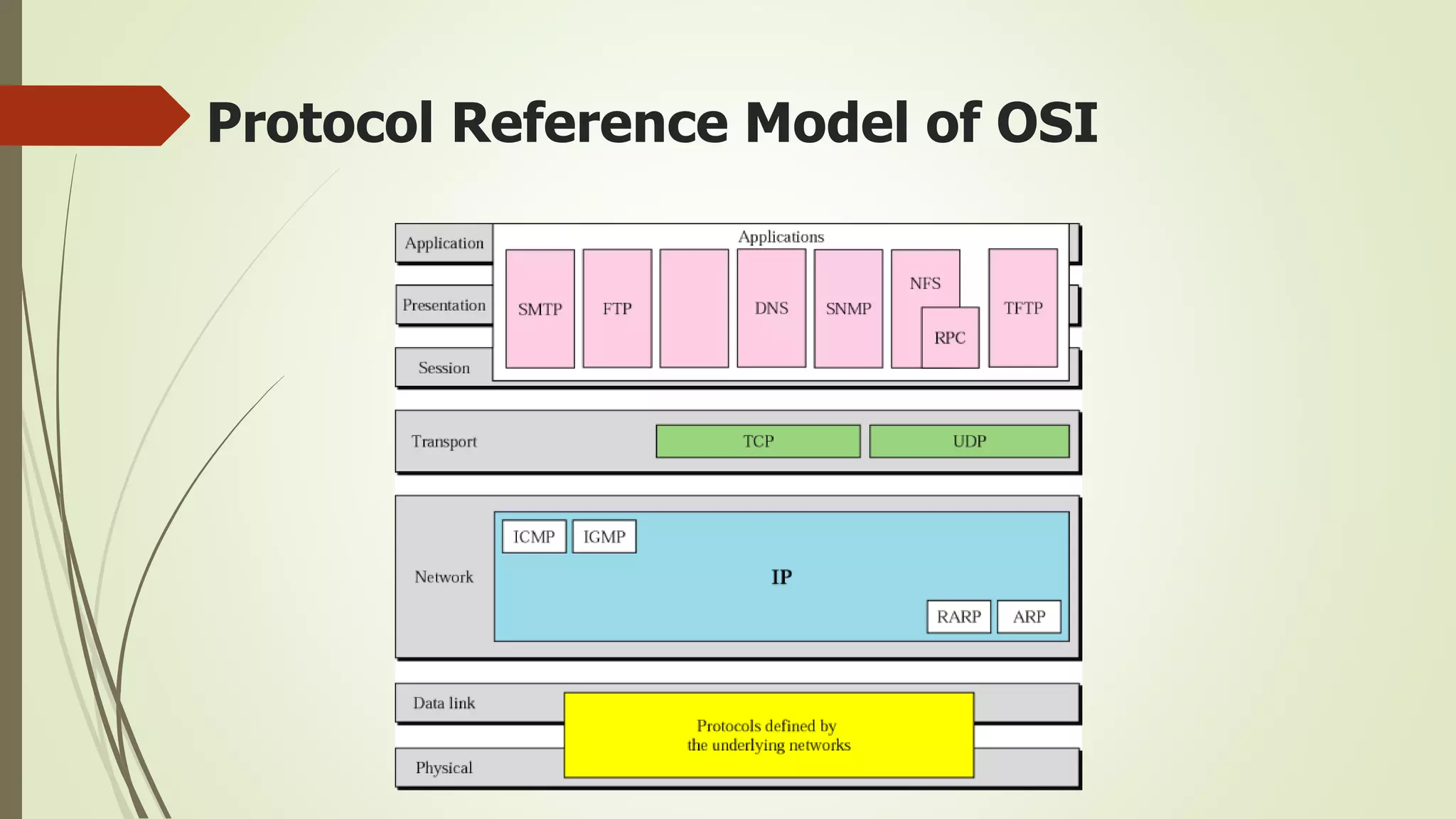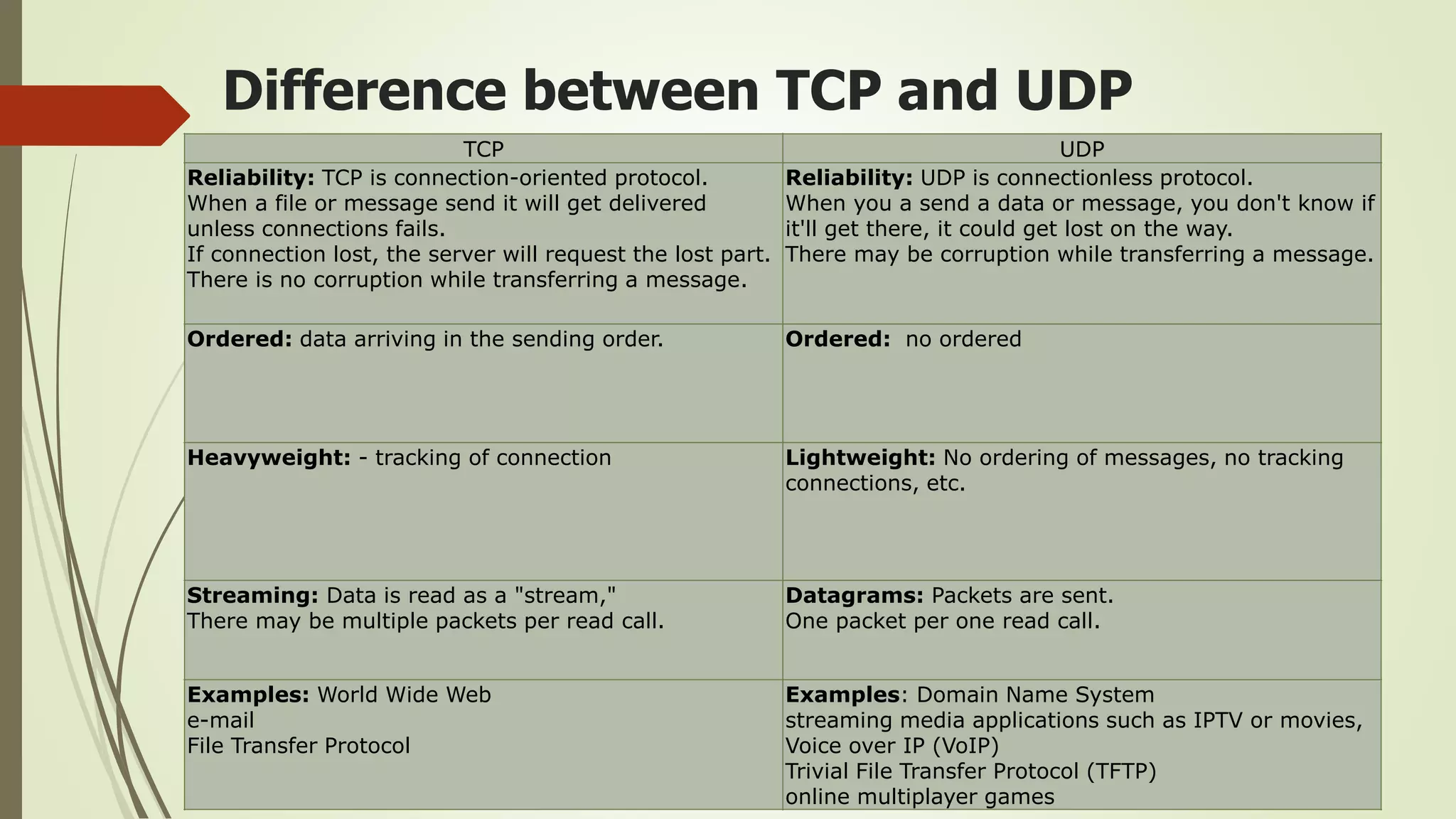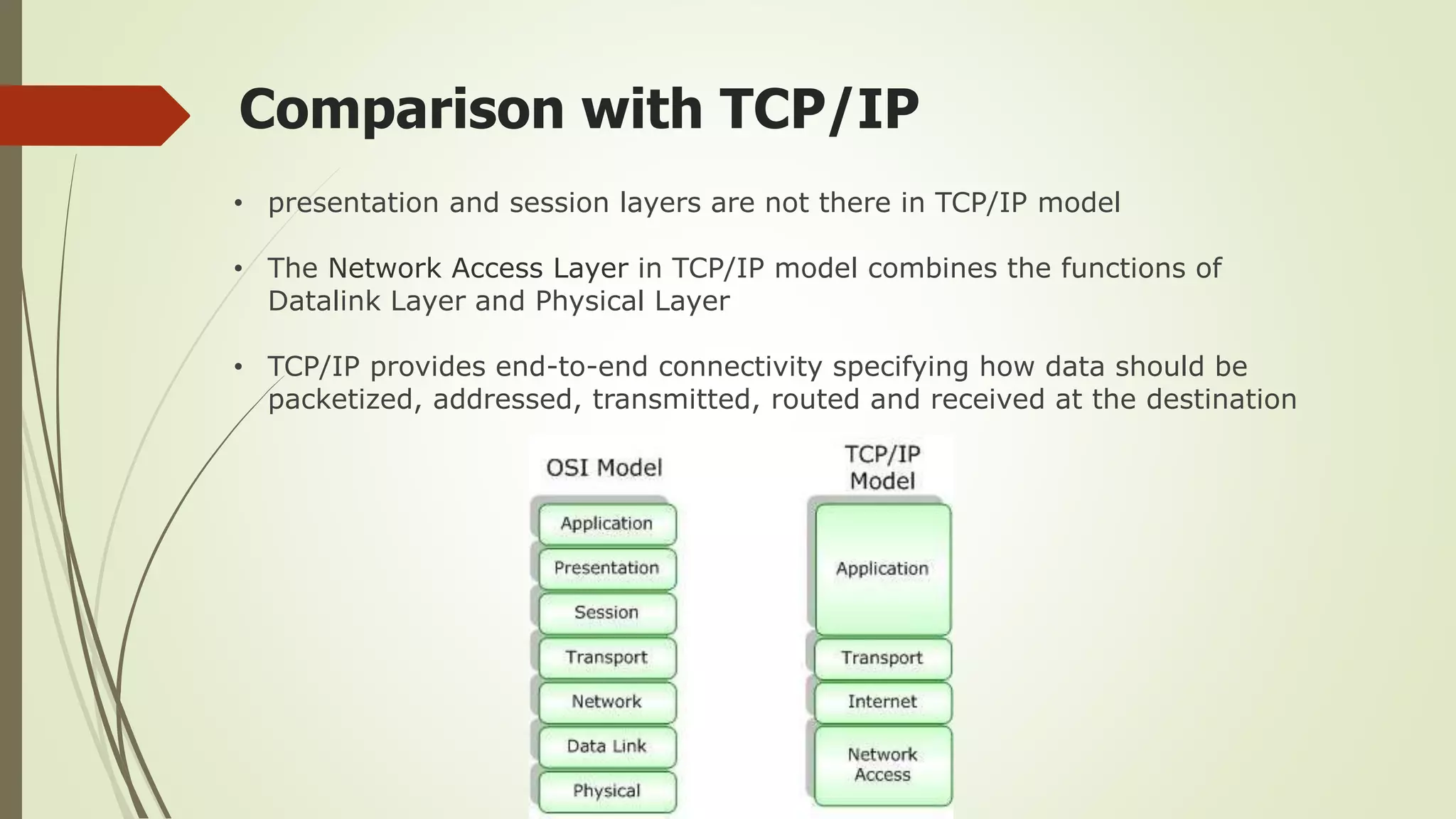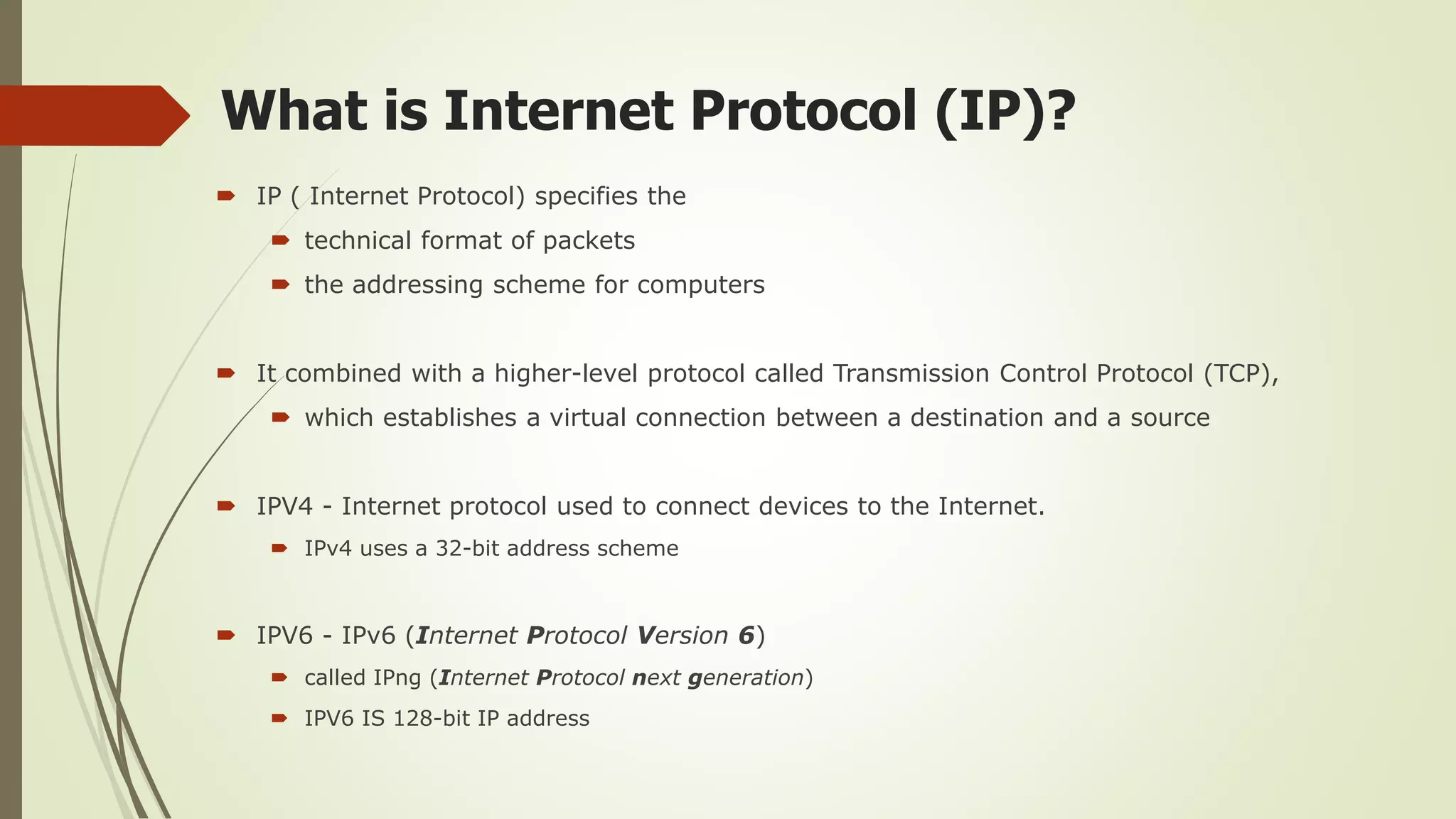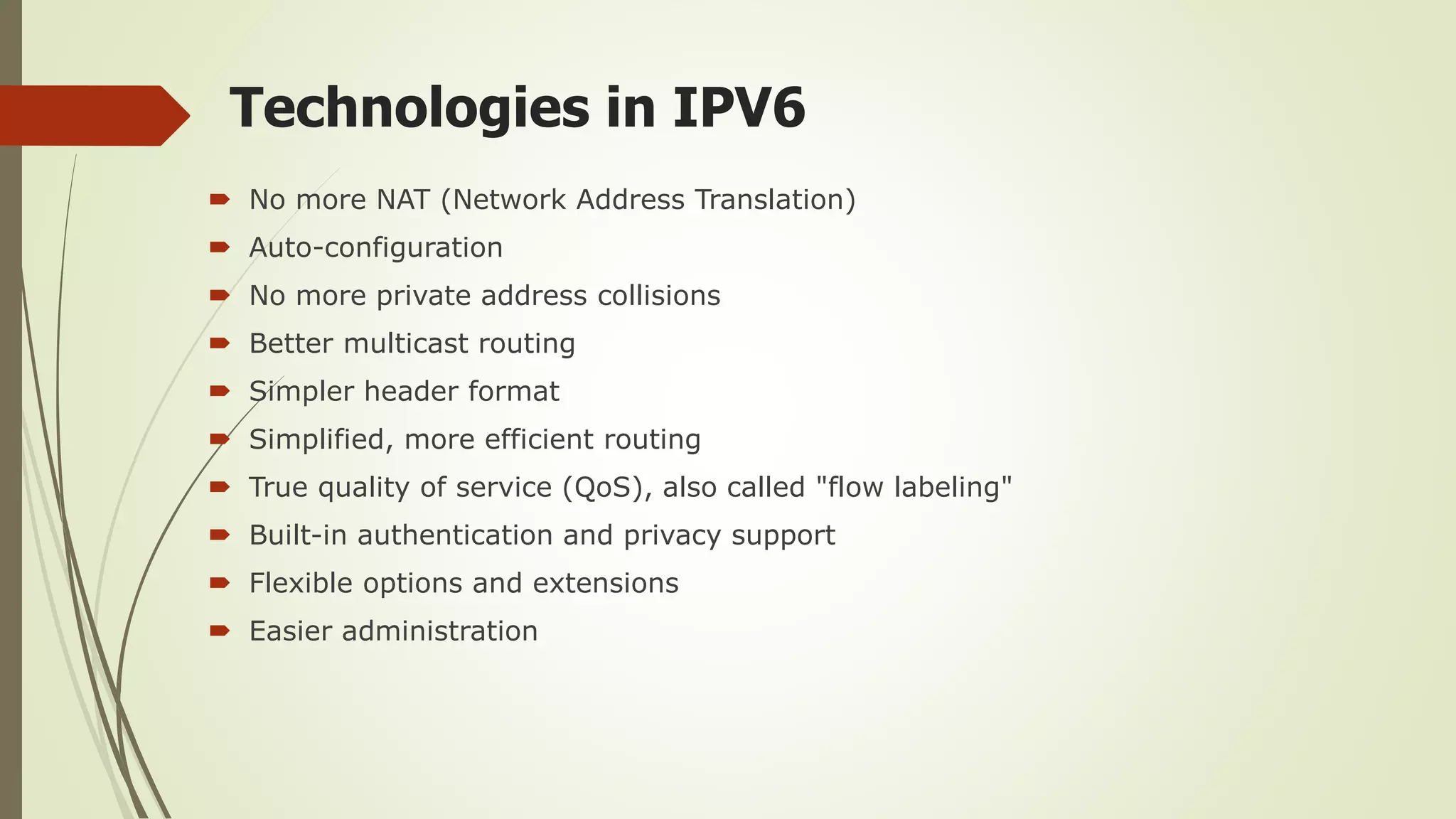The document discusses the OSI reference model, which breaks network communication into 7 layers, with each layer performing a unique task and only interacting with adjacent layers. It also compares the OSI model to the TCP/IP model. The key difference is that TCP/IP combines the functions of the OSI data link and physical layers. The document further explains the Internet Protocol (IP) which specifies packet formatting and addressing for data transmission. It distinguishes between IPv4 and IPv6, noting IPv6 uses a 128-bit addressing scheme and provides improvements over IPv4 such as no NAT.
